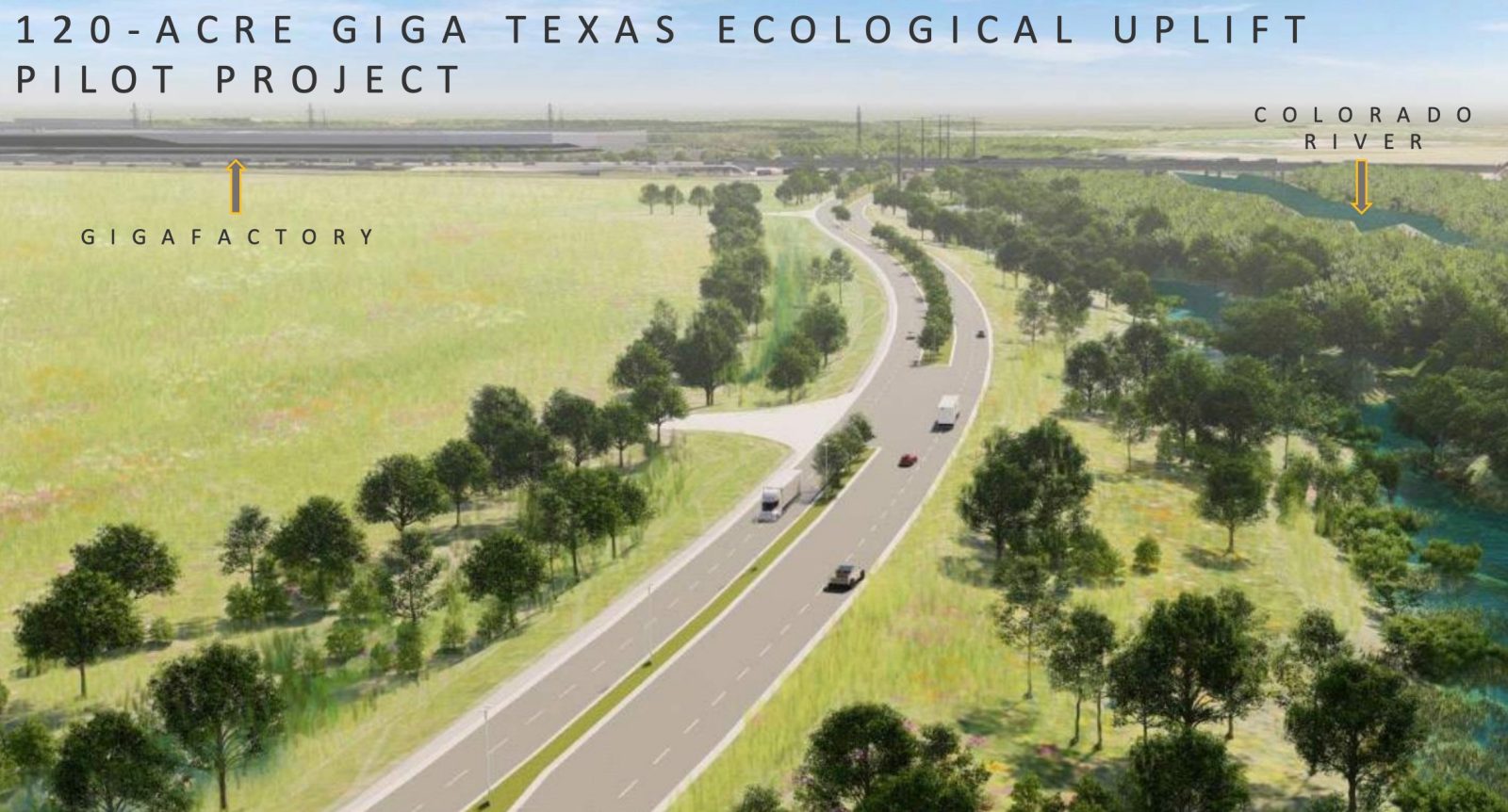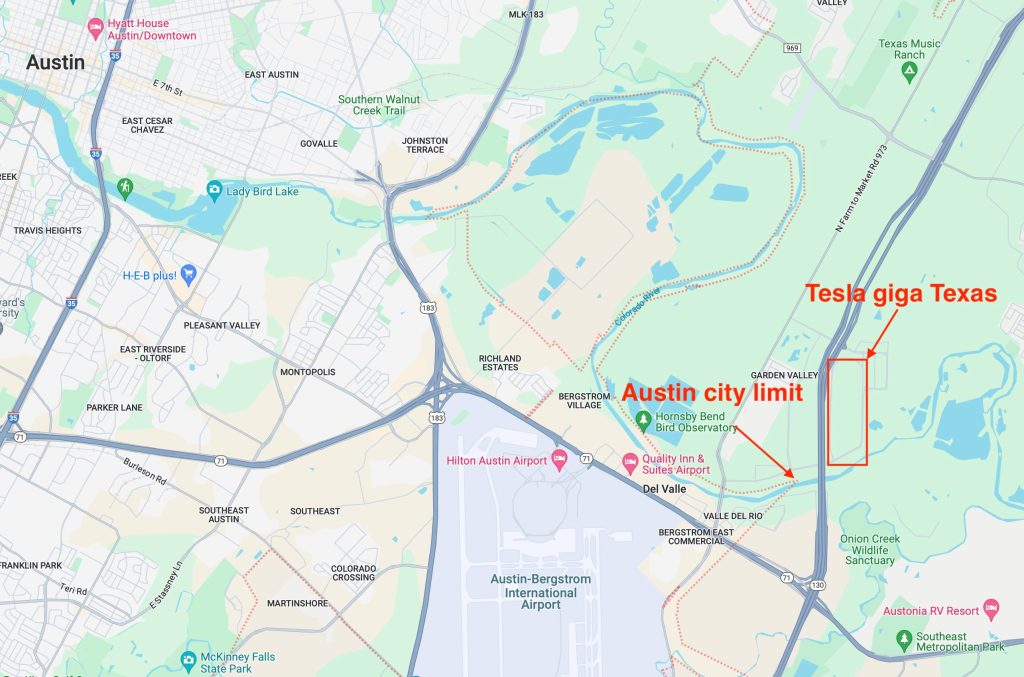
Tesla has used a new Texas state law to exempt its Austin gigafactory from Austin’s environmental regulations, as reported by Austin Business Journal.
Tesla’s Texas gigafactory is commonly referred to as being in Austin, but it is actually situated not far outside the city’s official borders.
This is technically part of Austin’s “extraterritorial jurisdiction” (ETJ) an area around the city which doesn’t technically belong to the city, but which the city can still exercise some control over the development of.
Due to the large amount of unincorporated land in Texas, and its growing population causing cities to tend to sprawl outward, it is prudent for some cities to help plan the areas immediately outside their limits, so that infrastructure can be compatible if the city later grows to encompass those areas. This is why Texas and some other Western states have ETJ laws.

But, last year, the Texas legislature passed a law, SB 2038, allowing developments to remove themselves from these ETJs relatively easily.
Earlier this year, Tesla filed a petition to remove itself from Austin’s ETJ, and that petition was accepted, according to Austin Business Journal.
The law has been challenged by several cities in Texas, though Austin is not one of the cities opposing it.
Tesla’s removal from the ETJ allows it to skirt Austin’s environmental regulations, particularly over regulation of water quality and flooding issues, according to an Austin spokesperson interviewed by Austin Business Journal.
Both of these would be important at the gigafactory site, since the property encompasses 2,100 acres and runs directly along the Colorado River, just after it runs through Austin’s center.
Tesla itself has pointed out the ecological importance of its location, as when the site was first selected, Tesla CEO Elon Musk said the area would be an “ecological paradise.” That promised ecological paradise has not yet materialized, but the company did present a plan to create a 120-acre public space alongside the river last October.
Tesla is also building something called a “Giga Water Loop” at the site, but we don’t actually know much more than that about what it is.
Water issues have been in focus at other Tesla locations, particularly its gigafactory in Grünheide,outside Berlin, Germany. While some opposition to the factory has come from front groups for the oil industry, there have also been criminal allegations by legitimate environmental groups related to Tesla’s management of its water usage.
The issues have rankled Tesla’s relationship with the local community in Grünheide, with locals voting down expansion of the factory and, in a crazier and much less productive move, resulting in sabotage that led to the factory’s temporary shutdown.
Top comment by DIWTTIY
I live in Austin and work in land development. SB 2038 does allow individual property owners to opt out of ETJ regulations. They still have to meet minimum development and environmental standards as set by the County (Travis) and submit site plans / permits to the County - but a lot of of the environmental and drainage engineering concerns of Austin (which is what the City primarily concerns themselves with in the ETJ since they can't exercise zoning controls) would not need to be adhered to beyond the minimum by the County. Austin has very strict environmental controls that govern building over specific watersheds, as well as drainage and water quality (for good reason - if the property was ever annexed into the City proper it would then be the City's job to fix anything that was wrong). All of that is gone now. It's not necessarily a "do whatever you want" card, but when you take away all the Austin environmental regulations the process is a lot more flexible. Is that good? Is that bad? It's open to individual interpretation.
(Edit: There is a LOT of people/companies doing this, and it has not been without controversy in the development community. There are some really good things, but it's so broad there have definitely been some bad actors using it to their advantage.)
In Germany, Tesla has responded to local issues by attempting to manage its water use better, and by replanting trees to make up for the site’s encroachment into a managed forest area nearby.
But now, in Texas, it seems like Tesla would rather not have to deal with that sort of thing at all (though, as usual, Tesla did not comment on why they took this move). By exempting itself from Austin’s regulations, there will be less oversight of what sort of water usage or discharge the site has, and whether that might affect other parts of the river.
And yet, Tesla has still benefitted from its proximity to Austin, as the city extended utility connections to the site during the construction process. Austin did this without first annexing the area, as at the time, Texas law was clear that the area was in the city’s ETJ.
Now due to changing Texas law, Tesla gets to keep those benefits, but has exempted itself from environmental oversight, despite making many environmental claims about the site in question.
FTC: We use income earning auto affiliate links. More.







Comments